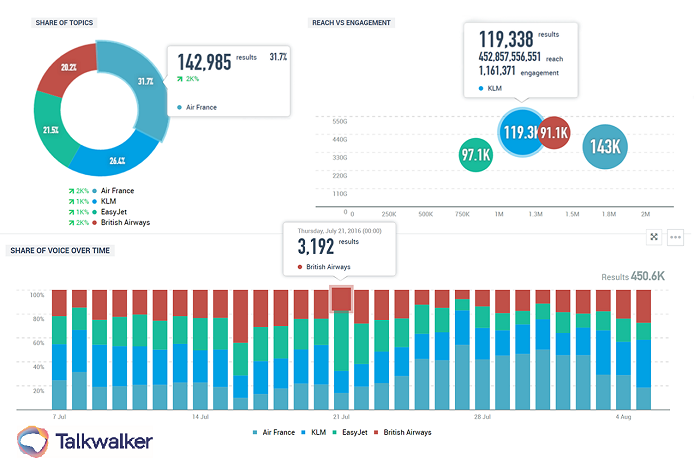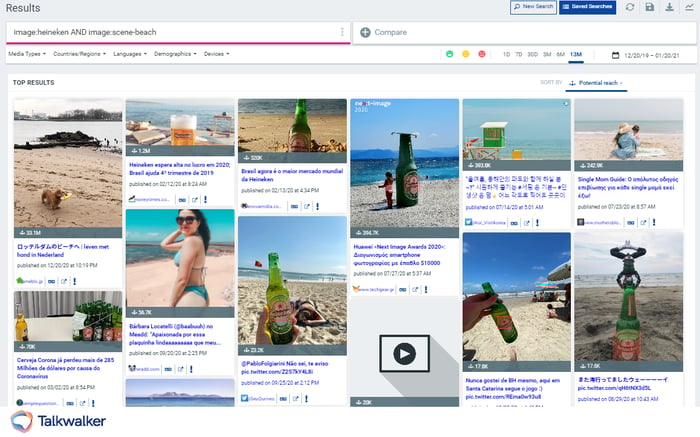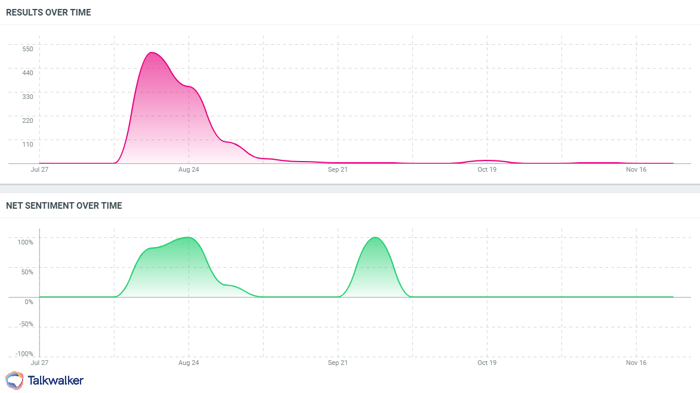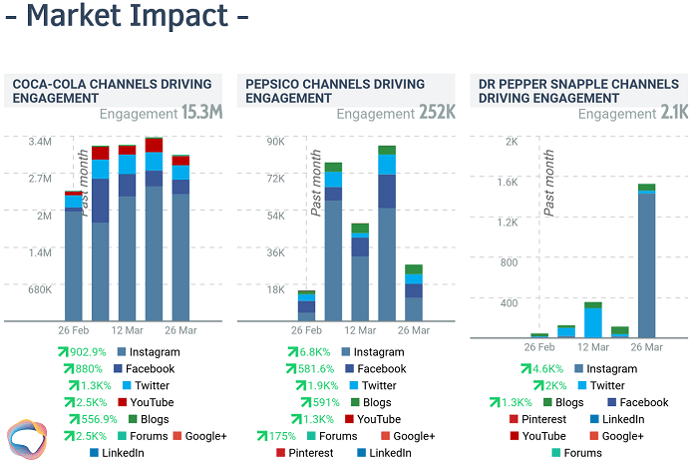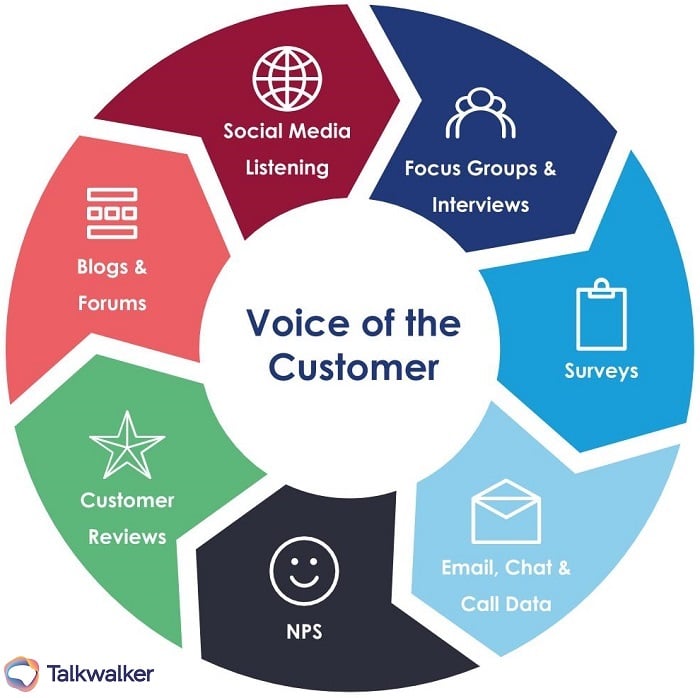Show Me A Consumer Intelligence Dashboard Template
Conversation analysis gathers consumer insights so you can optimize your marketing strategy, to better meet consumer demands.
Download our free - simulated - consumer intelligence dashboard template to see what you're missing.
If you create data-driven profiles of consumers - conversation insights, their community - you can optimize your marketing campaigns by creating content that will resonate. Speak their language. Use influencers they’ll follow. Give them what they want.
Conversation analysis tools will drive your consumer insights strategy, analyzing data from multiple sources - social media, blogs, reviews, surveys, websites, call center transcripts, email, forum...
I’m going to talk about what conversation analysis is, why it has to be part of your marketing strategy, and how to get started...
Table of contents
- What is conversation analysis?
- Why analyze consumer conversation?
- Market research vs conversation analysis
- Benefits of conversation analysis
- Improve performance with conversation analysis
- Visualize the voice of the customer - free template
What is conversation analysis?
The definition of conversation analysis - CA… the study of social interactions - verbal and non-verbal. Conversations taking place online - social media, blogs, forums, review sites - and offline - helplines, customer support emails, market research, call center transcripts.
Conversation analysis goes hand in hand with content analysis, social media analysis, transcript analysis, etc. It’s a tool to understand human social interaction during conversations.
As a marketer, you’re familiar with social listening. It’s part of your marketing strategy.
Gosh, I seriously hope it is.
Social listening collects consumer insights. You’re doing it. Your competitors are doing it. Likely, you’re collecting the same insights, and creating similar marketing campaigns.
How can I stand out, I hear you cry.
Conversation analysis goes beyond social listening. While your social listening strategy finds brand mentions, competitor mentions, consumer sentiment - how people feel about your brand and those of your competitors - conversation analysis allows you to go further.
Conversation analysis example
Your social listening tool finds negative comments about your product. You jump into the conversation to address the issue, and prevent it damaging your brand reputation. Problem solved.
Not quite.
What is it about your product that caused the negative comment? Find this out - ask questions - and you’ll eliminate future bad reviews. It’s a vital part of conversation analysis that will influence consumers’ trust in your brand.
Why analyze consumer conversations?
It’s all in the tone of voice.
The marketing content you write and where you say it is, of course, important. But, the tone you use - how you say it - clearly defines your brand’s personality. It expresses an emotion. The same can be said about consumer conversations.
Consumer insights can be found by monitoring and analyzing consumer conversations that are about your brand and product, their needs and pain points, comments about your competitors, your industry.
- Learn what consumers are looking for on your website, so you can create targeted content
- Identify spikes and dips in conversations about your brand
- Understand the language consumers are using, so your teams - support, sales, marketing, PR - can improve communication
- See how consumers behave on your site - navigation, top pages, sticking points - to understand their buying experience
As consumers, we’re looking for a quick, personalized response. Human interactions. A conversation.
Brands that use new technologies - like a chatbot - to increase personalization, show a 21% stronger lead acceptance rate, and 36% higher conversion rate that brands who don’t.
Yes, chatbots are a thing. Online conversation 24/7. But, it has to be a real person behind the chat. We can all spot a bot.
79% of businesses claim that having a live chat on their website has brought positive results for customer loyalty, sales, and revenue.
You’ll achieve strategic business outcomes with consumer-focused conversations, plus you’ll find insights by asking questions.
Market research vs conversation analysis
Conversation analysis isn’t standalone. Combine with traditional market research, and you’ll have a holistic view of consumers.
Market research involves answering specific questions and sharing opinions. While using a conversation analysis tool will gather insights that reveal how your customers use your products. How they feel about your brand.
User-generated content in consumer conversations is more emotional. Less staged. You’ll find mentions of competitors’ products, shared images, comments - positive and negative, hashtags, and emoji.
If you'd like to learn more about analyzing your market, take a look at my Market Research Guide.
Benefits of conversation analysis
Use conversational analysis tools to find consumer insights to help you understand consumers’ expectations, buying habits, interests, and preferences.
- Collect insights in real-time during the customer journey, to improve the user experience
- Analyze marketing campaigns to check they’re working, and improve if necessary
- Optimize product development with customer feedback
Benchmark your performance
Consumer insights will help you do performance benchmarking. Effective benchmarking is both quantitative and qualitative. This’ll enable you to compare your business with competitors, brand perception, and product performance in your industry.
Talkwalker AI-powered sentiment analysis, benchmarking three leading soft drink brands.
Why are they outranking you in search engines? Which keywords are they using and ranking for? What marketing strategies have they employed? Which countries are they targeting? Identify their strengths and weaknesses.
Compare the performance of your brand in the market with your competitors.
Talkwalker Analytics - share of voice, engagement vs reach.
Target your marketing campaigns
How are consumers using your products? Listening to online conversations will help you understand how your product is being consumed and where. Based on the insights you find, you can identify associated products and adapt your marketing communication and offers.
Image recognition identifies your logo with or without a brand mention, to understand where your product is being consumed and how.
Check out our case study - In Pizza We Crust. It explains how a pizza restaurant chain looking to open new sites across Europe, used our AI-powered, proprietary image recognition technology to understand the preferences of the new target audiences. What they wanted to drink with their pizza. Where they wanted to eat. Which toppings? The client was able to successfully target menu choices according to local and cultural insights.
Optimize product development
Follow consumer conversations to measure your brand’s reputation and the sentiment being expressed.
Last year, when Bud Light shared a tweet advertising for a #ChiefMemeOfficer, the job ad was quickly picked up in online conversation. By the end of the summer, sentiment for the brand and product was mostly positive.
We made a great-tasting hard seltzer but honestly our memes are terrible. Time to change that. Apply now to be our #ChiefMemeOfficer. It’s a real job with a salary.
Tag someone who would be perfect for the position.
Apply here: https://t.co/wLJU8cqWQm pic.twitter.com/7LXZOBm8mt
— Bud Light (@budlight) August 18, 2020
Sentiment for Bud Light and the job ad spiked at the close of summer.
If you track consumers’ opinions with regard to your products, you’ll find valuable feedback that will enable optimization of your offerings. Which features do they love? Which do they hate? Do they prefer a competitor’s product over yours? Why?
Back in 2008, My Starbucks Idea was launched. The coffee brand invited consumers to submit ideas for new flavors, products, improvements, etc.
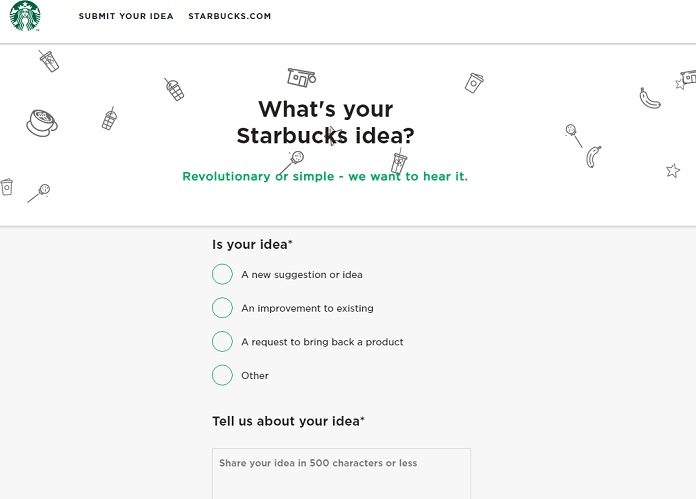
Starbucks invited consumers to share new product ideas.
Subsequently, the brand added dairy-free milk products to its product line. Collecting valuable feedback to enable brand and product improvement.
Tell us your favorite Starbucks drink without telling us your favorite Starbucks drink.
— Starbucks Coffee (@Starbucks) December 11, 2020
The ideas website, along with social listening on Twitter, Facebook, Instagram, etc., collected consumer conversation insights and revealed exactly what consumers wanted.
You asked we listened. Introducing our new Oat dairy alternative (yes, it's vegan). Try it in your latte today. pic.twitter.com/B4r6FUdK5i
— Starbucks UK (@StarbucksUK) January 4, 2018
Exploit user-generated content
90% of consumers state that user-generated content influences their buying decisions, beating all other forms of marketing. 81% will pay more for a product, if it’s received positive reviews.
Monitor consumer reactions to your brand to find user-generated content - UGC - in testimonials, blog posts, tweets, reviews, videos, images, snaps, podcasts, emails, etc.
Positive UGC is a marketer’s dream. It’s proven to increase engagement and conversions. It’s credible. It’s authentic. It’s free.
At the end of last year, Head of Digital at ITV News, Stephen Hull, shared a tweet of a spoof audit of his Quality Street tin. He showed the number of chocolates of each color in a funky visual bar graph.
UGC remains a top social media trend,.
It can improve your marketing campaigns and boost your brand reputation.
His conclusion? #InEqualityStreet! The post immediately went viral, and generated over 70K engagements.
Improve customer experience
Collect consumer insights throughout the buying journey, to identify sticking points. Where are they dropping off your site? Why are they abandoning their carts?
3 ways conversational analysis can improve your CX strategy...
- Track issues and evolving trends that matter to your customers
- Understand how consumer behavior has changed
- Analyze customer sentiment across different touch points -
Check out Christine’s post - Customer Experience Guide to Improve Your CX Strategy - for more information.
Find influencers that match your brand
94% of marketers use influencers in their campaigns because it drives 11x more ROI than traditional marketing.
Listen to consumer conversations and identify which influencers they’re following. Who do they trust so much that they’ll buy any product they recommend?
Traditional advertising lost its mojo. Consumers stopped listening to brands talking at them with hard-sell messages. We want to listen to humans. We trust humans.
92% of consumers trust product recommendations from individuals over brands.
We ignore banner ads, and scroll past paid ads in search engines. We’re looking for people we can trust. Use influencer campaigns because…
- 83% of consumers trust recommendations from peers over brands, and 66% from reviews posted by consumers
- Influencer campaigns earn $6.85 in earned media value for every dollar spent
- Influencers increase brand awareness and bring credibility to your brand
Improve performance with conversation analysis
Every tweet, blog post, review, comment… every conversation is monitored. Themes are identified, sentiment is analyzed. Meaning you’ll know which topics your audience is talking about, and how they feel about them.
Conversation analysis tools will also identify and analyze…
- Influencers they follow
- Brands they follow
- Content they’re sharing
- Images and video they’re sharing
- Hashtags and emoji
- Keywords in their bio
Your marketing strategy needs a social listening tool
No way! You can’t possibly monitor online conversations by hand. Aside from the time it takes, you’ve no guarantee of accuracy. How do you know you’re capturing everything?
A social listening platform like Talkwalker will help you understand consumer conversations at scale. You’ll be able to filter out the noise and monitor sentiment - by analyzing online, media, customer and consumer data on a single platform. Collect data over time with large sample bases, and keep your marketing strategies focused.
Choose an enterprise-level social listening tool and you’ll get…
- Real-time monitoring with faster time to insights
- Audience demographics and segmentation
- Competitor analysis
- A collaborative platform that your entire organization can use
- Increased social media return on investment
Track and analyze brand mentions
Real-time tracking of brand mentions allows you to segment and categorize them, based on where the mentions were sourced - social media channels, review sites, blog posts, etc.
For example, you could discover that your brand and products are being talked about in a country that you aren’t targeting. Or, most of your target audience are having conversations on Facebook, while your marketing campaigns are concentrated on Twitter.
Competitor analysis
The right social listening platform will harvest digital consumer insights to help your brand make data-driven decisions about future marketing campaigns.
Monitor your competitors marketing strategies. What are they saying? How are they saying it? What’s working for them, and what’s failing? Learn from their strengths and weaknesses.
- What type of content are they publishing - blog posts, videos, paid ads, eBooks, newsletter?
- Analyze competitors' SEO structure - where are they using keywords? What keywords are they targeting?
- How are they using social media - which networks, their engagement metrics, how often they post, followers, etc.?
- Who are their followers?
- Which influencers are they using?
Competitor analysis - market impact showing strategy across networks. (simulated Talkwalker report).
For more details, check out How To Conduct A Competitor Analysis.
Listen to the voice of the customer
If you don’t listen to consumers, do you even exist?
Examples of data you can combine to find the voice of the customer.
Consumers are the heart of your business. You need to listen to what they want. Their preferences, feedback, their pain points. These factors will define your business strategy.
Monitor consumer behavior and you’ll learn not only their habits, but how they want you to behave. Only then will you be able to target your marketing strategy according to their needs.
Visualize the voice of the customer
Imagine how many consumer insights are available in the millions of conversations taking place. How can you ignore them? Sourcing them, and feeding your marketing team with this data, along with other teams in your organization - product, customer support, sales - ensures your business has a data-driven strategy.
Innovative brands rely on consumer intelligence to support decision-making related to meeting customers’ wants and needs. How do they guarantee the full picture of customer behavior across billions of data points? Dashboards...
Download our free - simulated - consumer intelligence dashboard so you can see what you could be missing.
- Identify and react to changes in the market in real time
- Track your brand, products, competitors across multiple sources in a unified platform
- Democratize customer intelligence across your business
- Track the performance of campaigns, and measure the marketing ROI

